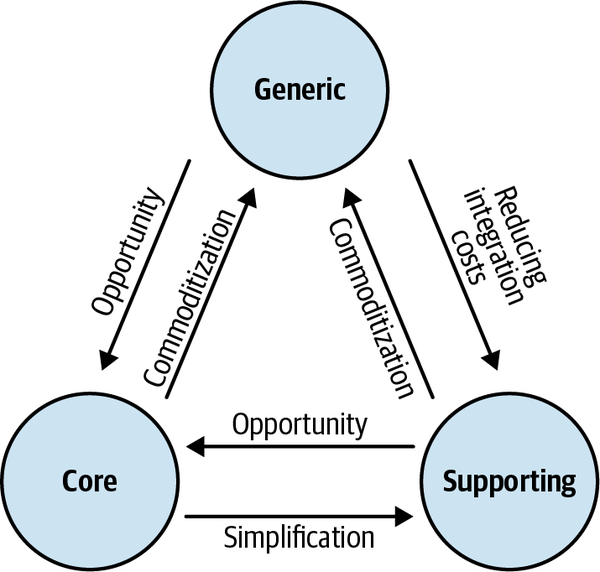A fine-grained area of business activity - one building block in the system. All of company’s subdomains form its business domain.
The subdomains have to interact with each other.
For example, Starbucks may be most recognized for its coffee, but building a successful coffeehouse chain requires more than just knowing how to make great coffee. You also have to buy or rent real estate at effective locations, hire personnel, and manage finances, among other activities. None of these subdomains on its own will make a profitable company. All of them together are necessary for a company to be able to compete in its business domain(s).
Types of subdomains
Subdomain type Competitive advantage Complexity Volatility Implementation Problem Core Yes High High In-house Interesting Generic No High Low Buy/adopt Solved Supporting No Low Low In-house/outsource Obvious
Morph
Subdomain (DDD) can morph from one type to another as the business grows and evolves. For example, Amazon is an example when generic subdomain become core subdomain. The company “reinvented” the way they managed their physical infrastructure and then turned it into a profitable business: Amazon Web Services.
Link to original

